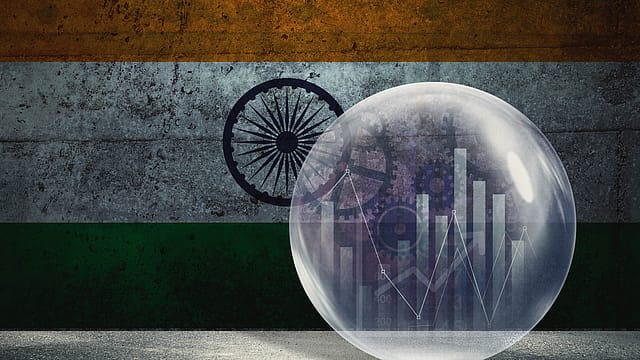India key player of economic growth in Asia: Morgan Stanley
ADVERTISEMENT

India saw a major transformation since 2014 and has been a key player when it comes to economic growth in Asia and the global economy, American multinational investment bank and financial services company Morgan Stanley in its latest report.
The past decade has been significant for India, says the report, adding the country has gained major positions in the world order, which are bound to have a major impact on the country's macro and market outlook.
The report highlights some of the biggest initiatives taken by the government, including policy reforms, the Insolvency and Bankruptcy Code (IBC), formalisation of the economy, foreign direct investment boost, and direct benefit transfer, among others.
"This India is different from what it was in 2013. In a short span of 10 years, India has gained positions in the world order with significant positive consequences for the macro and market outlook...India has transformed in less than a decade," the global agency said, cited news agency PTI.
The report says India will see a new wave of manufacturing and capex, with its share rising in the export market to 4.5% by 2031. The per capita income is also bound to increase from $2,200 to about $5,200 by the end of FY32.
January 2026
Netflix, which has been in India for a decade, has successfully struck a balance between high-class premium content and pricing that attracts a range of customers. Find out how the U.S. streaming giant evolved in India, plus an exclusive interview with CEO Ted Sarandos. Also read about the Best Investments for 2026, and how rising growth and easing inflation will come in handy for finance minister Nirmala Sitharaman as she prepares Budget 2026.
Morgan Stanley, in its November 2022 report, said India will become the third-largest economy by 2027 after the U.S. and China. This will propel its GDP from $3.4 trillion currently to $8.5 trillion over the next decade, wrote Chetan Ahya, chief Asia economist at Morgan Stanley in The Financial Times.
As India's economy grows manifold, it'll add $400 billion to the economic growth every year and its m-cap will rise from $3.4 trillion to $11 trillion by 2032, the economist had said.
However, the global financial body IMF (International Monetary Fund) projected in May 2022 that India's $5 trillion economy target will be achieved only by FY29. It said India's nominal GDP (gross domestic product) will rise to $4.92 trillion by FY28. This means the country will touch the $5 trillion economy mark in the financial year FY29.
Meanwhile, Reserve Bank of India governor Shaktikanta Das last week said India’s GDP growth could be above the 7% estimate for the financial year 2022-23, aided by sustained momentum in economic activity during the fourth quarter. “It will not be a surprise if the GDP growth of last year comes slightly above 7%,” Das said at the Confederation of Indian Industry (CII) Annual Session 2023.
The second advance estimate released by the National Statistical Office (NSO) in February had placed India’s real gross domestic product (GDP) growth at 7% in 2022-23. The government will release the country's Q4 FY23 GDP data today.
